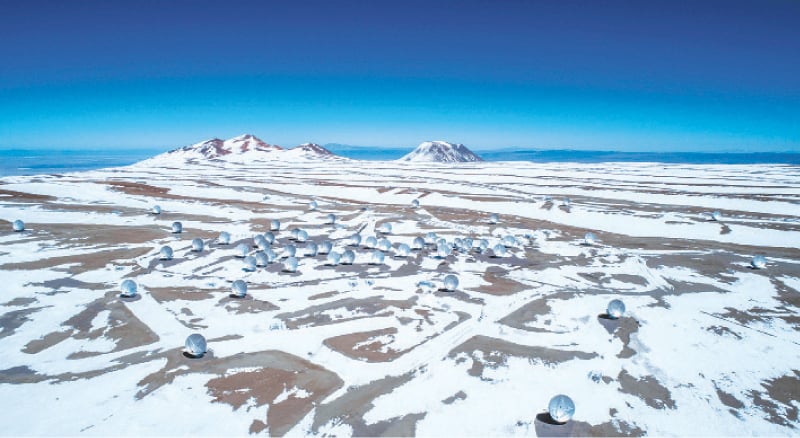
PARIS: Astronomers have discovered six galaxies ensnared in the cosmic “spider’s web” of a supermassive black hole soon after the Big Bang, according to research published on Thursday that could help explain the development of these enigmatic monsters.
The entire web is over 300 times the size of the Milky Way, according to a statement from ESO.
Black holes that emerged early in the history of the Universe are thought to have formed from the collapse of the first stars, but astronomers have puzzled over how they expanded into giants.
The newly discovered black hole — which dates from when the Universe was not even a billion years old — weighs in at one billion times the mass of our Sun and was spotted by the European Southern Observatory (ESO).
Scientists said the finding helps provide an explanation for how supermassive black holes such as the one at the centre of our Milky Way may have developed.
This is because astronomers believe the filaments trapping the cluster of galaxies are carrying enough gas to “feed” the black hole, enabling it to grow.
“The cosmic web filaments are like spider’s web threads,” said Marco Mignoli, an astronomer at the National Institute for Astrophysics in Bologna, who led the research published in the journal Astronomy & Astrophysics.
“The galaxies stand and grow where the filaments cross, and streams of gas — available to fuel both the galaxies and the central supermassive black hole — can flow along the filaments.” Mignoli said that until now there had been “no good explanation” for the existence of such huge early black holes.
Researchers said the web structure may have formed with the help of dark matter — thought to attract huge amounts of gas in the early Universe.
Published in Dawn, October 2nd, 2020















































Dear visitor, the comments section is undergoing an overhaul and will return soon.